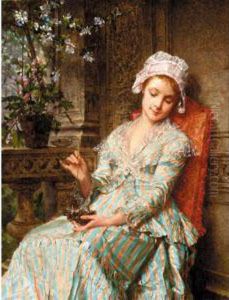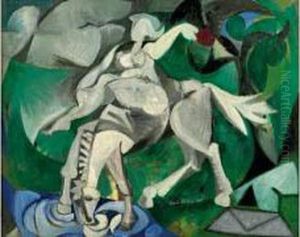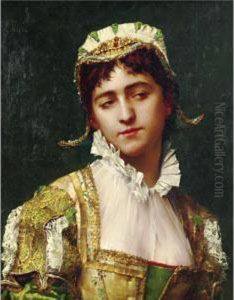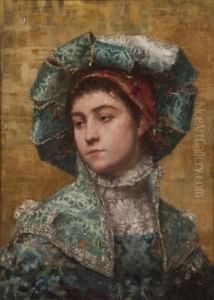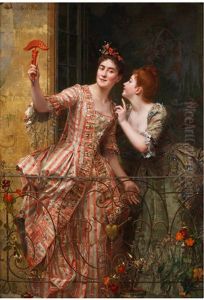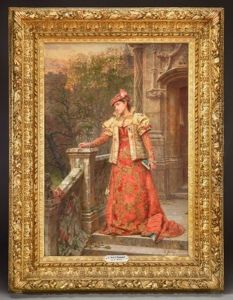Louis Emile Villa Paintings
Louis Emile Villa was a French painter born in 1836, renowned for his contributions to the world of art, particularly in the genre of historical and genre painting. His life spanned an era of significant transformation in France, from the tumult of the Second Republic through the establishment and eventual demise of the Second Empire, and into the early years of the Third Republic. This period was marked by significant social, political, and technological changes, which influenced the arts in profound ways. Villa's work, therefore, can be seen as a reflection of the shifting cultural landscape of France during the 19th century.
Villa was trained in the fine arts in Paris, the epicenter of artistic innovation and education at the time. He was a student at the École des Beaux-Arts, which was the leading art school in France, where he would have been immersed in the academic traditions of French art, learning the techniques and principles that had dominated European art for centuries. However, like many artists of his time, Villa was also exposed to the burgeoning movements of Realism and Impressionism, which were beginning to challenge the academic norms.
Throughout his career, Villa exhibited his works at the Paris Salon, the most prestigious art exhibition in France. His paintings often depicted scenes from history or everyday life, imbued with a sense of realism and attention to detail that was characteristic of the period. Villa's ability to capture the essence of his subjects made his works popular among art collectors and the public alike.
Despite his success, Louis Emile Villa did not achieve the same level of fame as some of his contemporaries, such as Claude Monet or Edgar Degas. Nonetheless, his contributions to French art have been recognized by art historians and scholars who appreciate the depth and quality of his work. Villa's paintings are now part of several museum collections, where they continue to be studied and admired.
Louis Emile Villa passed away in 1900, at the age of 64. His death marked the end of a career that had spanned some of the most dynamic and transformative decades in French history. Today, Villa is remembered as a skilled painter who captured the spirit of his times with both elegance and accuracy. His legacy lives on through his art, which continues to inspire and captivate audiences around the world.

